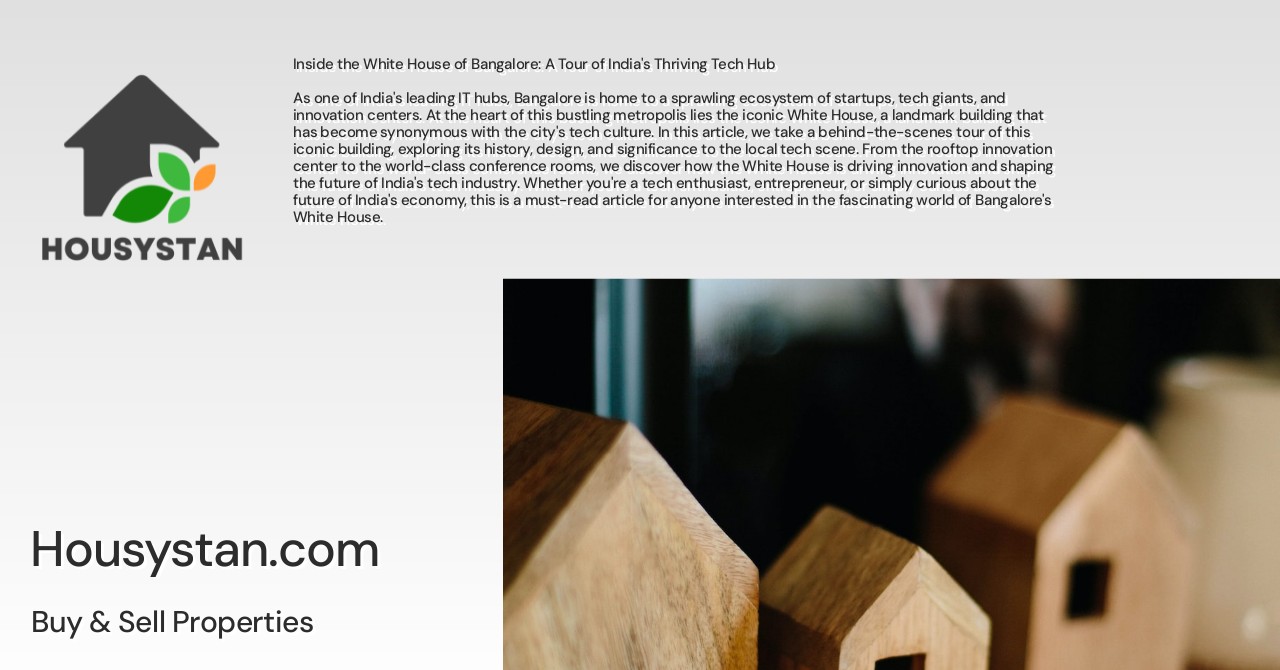Inside the White House of Bangalore: A Tour of India's Thriving Tech Hub
Read latest blogs and articles from Housystan

The Information mentioned here was last updated on:
28/12/2025Discover the vibrant pulse of Bangalore, India’s premier technology destination, by taking an exclusive tour inside the iconic White House of Bangalore. Renowned as the "Silicon Valley of India," Bangalore attracts innovators, entrepreneurs, and tech enthusiasts from around the globe. The White House stands as a symbol of progress, innovation, and the city's dynamic spirit, making it a must-visit landmark for anyone eager to experience the heart of India’s digital revolution.
Situated in the bustling IT corridor, the White House of Bangalore is more than just a celebrated building. Its modern architecture, cutting-edge facilities, and eco-friendly design reflect the forward-thinking mindset that defines the city. As you step inside, you are greeted by open collaborative spaces, state-of-the-art conference rooms, and inspiring work environments that foster creativity and productivity. Every corner of this structure echoes Bangalore’s commitment to technological advancement and sustainable growth.
Bangalore’s White House is surrounded by renowned tech parks, startups, and multinational companies, solidifying its reputation as a global technology powerhouse. The area thrives with energy as professionals from various backgrounds collaborate to drive innovation. Walking through the White House, visitors witness firsthand the convergence of traditional Indian values and contemporary digital culture, creating a unique blend that sets Bangalore apart from other metropolitan cities in India.
- Verified Tenants/Buyers
- Unlimited Property Listing
- Zero subscription/charges fee
Beyond its technological significance, the White House serves as a cultural hub, hosting tech meetups, networking events, and knowledge-sharing sessions. Its convenient location in Bangalore provides easy access to educational institutions, luxury hotels, shopping centers, and fine dining, ensuring a holistic experience for residents and visitors alike. Exploring the neighborhood reveals lush parks, historic sites, and a vibrant nightlife that complements the work-life balance cherished by Bangalore’s cosmopolitan community.
Whether you are a tech professional seeking new opportunities, an investor researching promising markets, or a traveler curious about India’s digital transformation, a visit to the White House of Bangalore offers invaluable insights. Immerse yourself in the innovation epicenter of India and discover why Bangalore continues to lead the nation’s journey toward a smarter, more connected future.